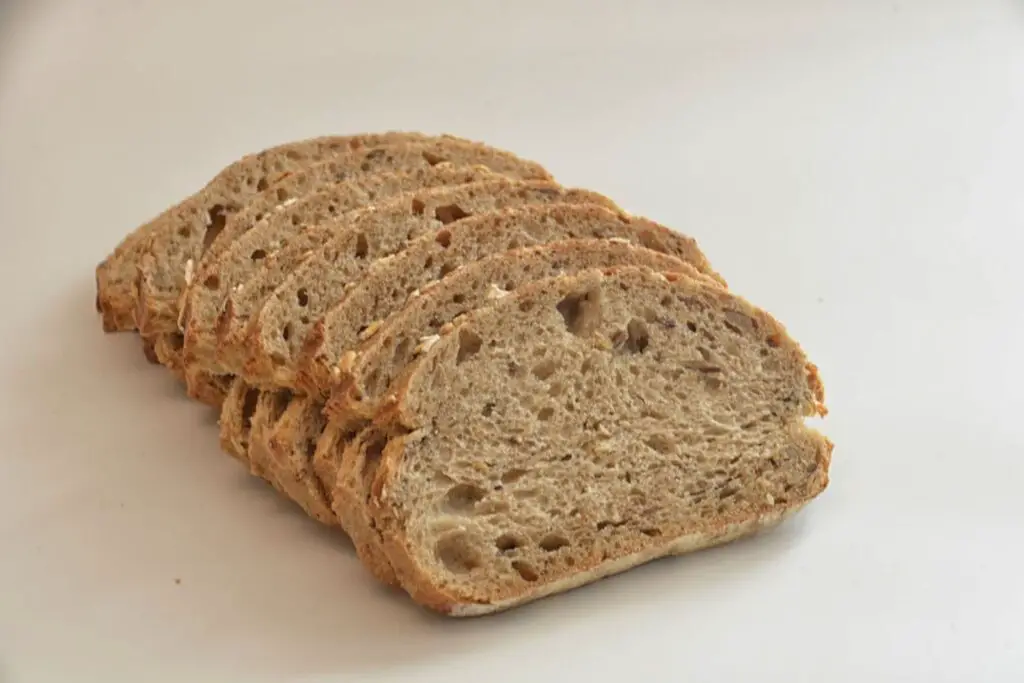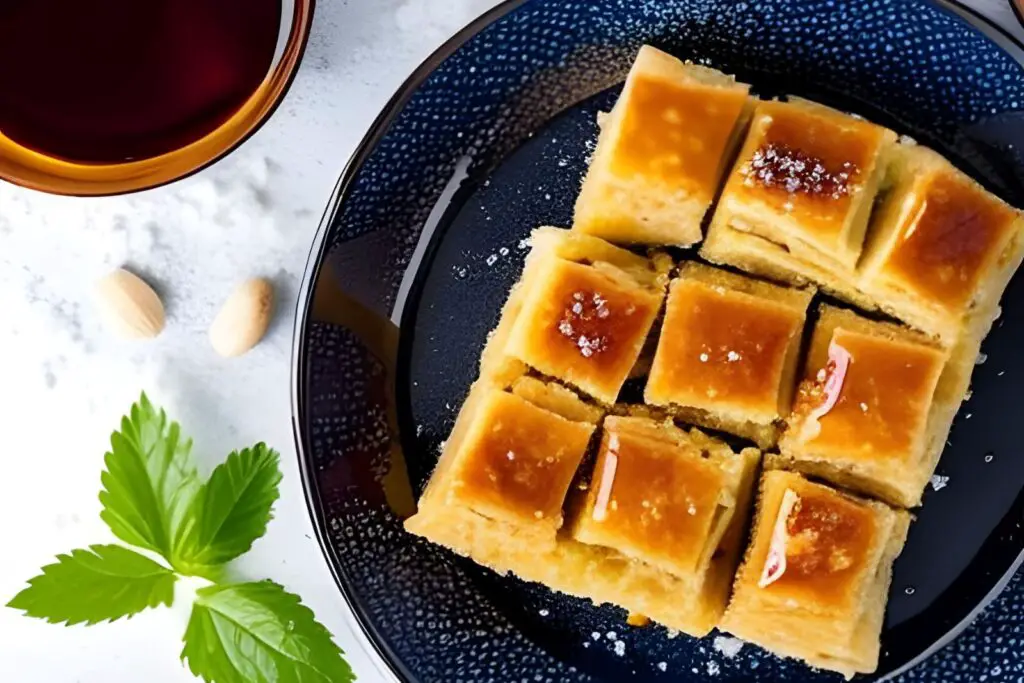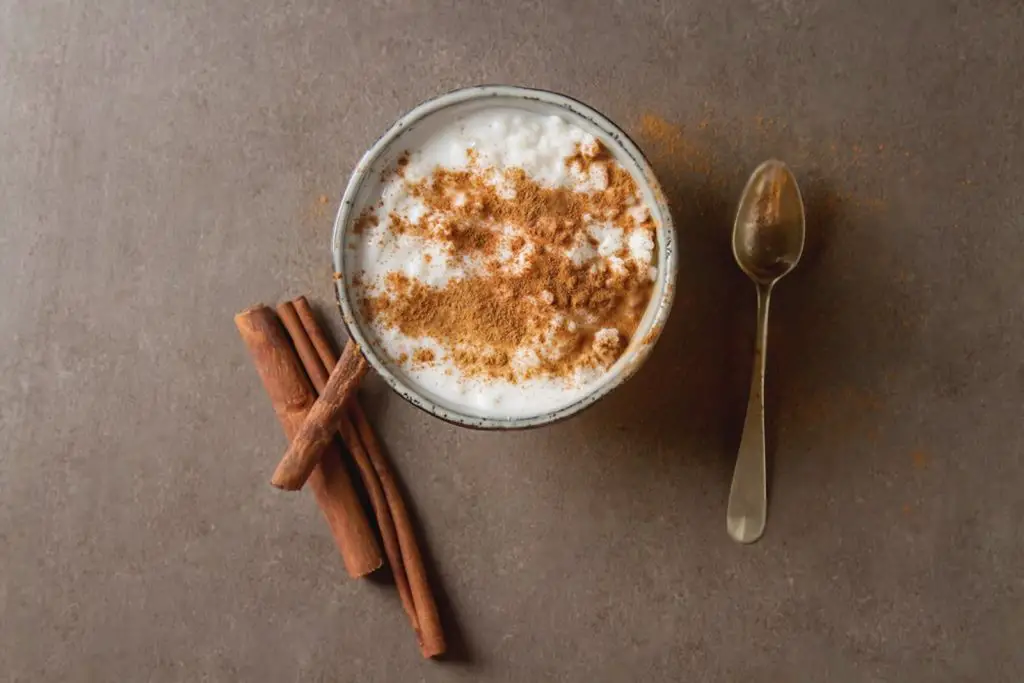
Egg bake, a savory and versatile dish, is a delightful combination of eggs, cheese, vegetables, and various seasonings baked to perfection. This comforting and satisfying casserole-style dish is perfect for breakfast, brunch, or even a simple weeknight dinner. Whether you have a surplus of egg bake or want to prepare it in advance for future meals, freezing is a convenient option. Freezing egg bake allows you to preserve its flavors and textures, ensuring that you can enjoy a delicious and hearty meal whenever you desire. In this guide, we will explore the best practices for freezing egg bake, including proper preparation, packaging, and storage techniques, so you can have a stash of this delectable dish ready to be reheated and savored. Join us as we uncover the secrets of freezing egg bake and embrace the convenience of having a comforting and flavorful meal at your fingertips, making mealtime effortless and enjoyable.
Here are the simple steps to freeze egg bake:
Step 1: Prepare the Egg Bake
The key is to begin by preparing your preferred egg bake recipe. Egg bakes can be customized with various ingredients such as vegetables, cheese, or meats, allowing you to create a dish that suits your taste. It’s important to ensure that the egg bake is fully cooked before freezing it.
Cooking the egg bake thoroughly before freezing serves two purposes. Firstly, it ensures that the dish is safe to consume once it is reheated after freezing. Cooking the egg bake to the appropriate internal temperature kills any potential bacteria or pathogens that could cause foodborne illnesses.
Secondly, cooking the egg bake fully enhances the overall flavor and texture of the dish. It allows the ingredients to meld together, intensifying the taste and creating a harmonious combination of flavors. This step ensures that the egg bake retains its deliciousness even after it has been frozen and reheated.
Whether you follow a specific recipe or use your own creativity, take the time to cook the egg bake until it is done. This will guarantee the best results when you thaw and enjoy it later.
Step 2: Allow the Egg Bake to Cool
Allow the cooked egg bake to cool completely before proceeding with the freezing process. Cooling the egg bake serves two main purposes: preventing condensation and avoiding freezer burn.
Condensation can occur when hot food is placed directly into a freezer. The temperature difference between the hot food and the cold freezer can cause moisture to form on the surface of the dish. This moisture can lead to ice crystals, which may affect the texture and quality of the egg bake when it is thawed later on. By allowing the egg bake to cool down, you reduce the chances of condensation forming and help maintain its optimal texture.
Freezer burn is another potential issue when freezing food. It is caused by dehydration and oxidation, resulting in dry and discolored patches on the surface of the food. By allowing the egg bake to cool completely, you minimize the moisture content on the surface, reducing the risk of freezer burn.
To cool the egg bake, remove it from the oven and place it on a wire rack or a heat-resistant surface. This allows air to circulate around the dish, facilitating faster and more even cooling. It is crucial to ensure that the egg bake reaches room temperature before proceeding with the next steps of the freezing process.
By allowing the egg bake to cool completely, you can preserve its texture, minimize the risk of condensation, and prevent freezer burn, ultimately ensuring that the frozen egg bake retains its quality and taste when thawed and reheated.
Step 3: Portion the Egg Bake
The goal is to divide the cooled egg bake into individual serving portions or portions that suit your needs before freezing it. This step offers several benefits and convenience when it comes to thawing and reheating the frozen egg bake.
Portioning the egg bake allows you to freeze it in smaller, individually-sized servings. This means that you can defrost and reheat only the amount you need at a given time, rather than having to thaw and reheat the entire dish. It provides flexibility and eliminates the need to thaw and reheat more than necessary, preventing potential food waste.
By dividing the egg bake into individual portions, you can also ensure that each serving is evenly heated during reheating. This helps maintain the desired texture and flavor throughout the dish, as smaller portions tend to heat more evenly compared to a large block of frozen food.
Additionally, portioning the egg bake makes it easier to store and organize in the freezer. You can stack or arrange the individual portions more efficiently, optimizing the use of freezer space and making it easier to locate and access specific servings when needed.
When determining the size of the portions, consider your typical serving size or the amount you would like to have for a single meal. You can use containers or freezer-safe bags to separate and package each portion, ensuring they are well-sealed to prevent freezer burn.
Portioning the cooled egg bake before freezing provides convenience, flexibility, and efficient storage, allowing you to thaw and enjoy the desired amount of egg bake without any hassle.
Step 4: Wrap the Portions
Properly wrapping each portion of the egg bake before placing them in the freezer. This step is crucial to protect the egg bake from freezer burn and maintain its quality during storage.
The wrapping material options include plastic wrap, aluminum foil, or freezer-safe containers, depending on your preference and availability. Here’s why each option can effectively package the egg bake:
- Plastic wrap: Use a high-quality plastic wrap that is specifically designed for freezer use. Start by placing the portion of egg bake in the center of a sheet of plastic wrap. Wrap the plastic tightly around the egg bake, ensuring that there are no air pockets trapped inside. The tight wrapping prevents exposure to air, which can cause freezer burn and affect the texture and taste of the egg bake.
- Aluminum foil: If you prefer to use aluminum foil, it provides a sturdy and protective wrapping option. Place the portion of egg bake in the center of a sheet of aluminum foil. Fold the foil tightly around the egg bake, sealing it completely. Like plastic wrap, aluminum foil helps prevent air from reaching the egg bake and reduces the risk of freezer burn.
- Freezer-safe containers: Alternatively, you can use freezer-safe containers to package the egg bake. Choose containers that are specifically designed for freezer use, ensuring they have a tight-fitting lid. Place the portion of egg bake in the container, leaving some headspace to account for expansion during freezing. Seal the container tightly to create an airtight environment, protecting the egg bake from freezer burn.
Regardless of the wrapping material you choose, the key is to ensure a tight seal with no air pockets. Freezer burn occurs when air comes into contact with the surface of the food, leading to dehydration and loss of quality. By preventing air exposure, you can maintain the texture, flavor, and overall quality of the egg bake during freezing.
Properly wrapped portions of egg bake will be well-protected in the freezer, preserving their taste and texture until you’re ready to enjoy them.
Step 5: Place in a Freezer Bag
After wrapping each portion of the egg bake with plastic wrap or foil, the next step is to place them into a freezer bag. This additional layer of packaging provides extra protection and helps maintain the quality of the egg bake during freezer storage. Here’s why using a freezer bag is recommended:
- Excess air removal: Before placing the wrapped portions into the freezer bag, it’s important to squeeze out any excess air. Air contains moisture and can contribute to freezer burn. By removing as much air as possible, you reduce the chances of freezer burn occurring and help preserve the texture and flavor of the egg bake.
- Sealing tightly: Once the wrapped portions are inside the freezer bag, ensure that the bag is sealed tightly. This prevents air from entering the bag and coming into contact with the egg bake. A secure seal helps maintain the quality and integrity of the egg bake while it’s stored in the freezer.
- Additional layer of protection: The freezer bag acts as an extra barrier against potential odors, moisture, and temperature fluctuations in the freezer. It provides an added level of insulation and helps protect the egg bake from freezer burn or absorbing any unwanted flavors from other foods in the freezer.
When placing the wrapped portions into the freezer bag, try to arrange them in a flat and compact manner. This helps optimize freezer space and allows for easier stacking or organizing of multiple bags, if needed.
By using a freezer bag, removing excess air, and sealing tightly, you provide an extra layer of protection for the wrapped portions of the egg bake. This helps maintain the quality, texture, and flavor of the egg bake during freezer storage, ensuring it remains delicious and enjoyable when thawed and reheated.
Step 6: Label and Date
Labeling and dating the packages containing the frozen egg bake is emphasized. This simple but essential step helps you keep track of the storage time and easily identify the egg bake when you need it. Here’s why labeling and dating the packages is beneficial:
- Storage time tracking: By labeling each package with the date of freezing, you have a clear reference point for how long the egg bake has been in the freezer. This information is crucial for food safety and quality purposes. Different foods have varying recommended storage times in the freezer, and knowing when the egg bake was frozen allows you to determine its freshness and prioritize its use accordingly.
- Easy identification: Labeling the packages with the contents of the egg bake makes it easy to identify them later on. When multiple items are stored in the freezer, it can be challenging to remember the specific contents of each package. By clearly labeling the packages, you can quickly identify the egg bake without having to open or thaw multiple packages.
- Organizational convenience: Labeling and dating the packages contribute to an organized freezer. When you have a clear label on each package, you can arrange them neatly and efficiently in the freezer, making it easier to locate and access the specified package of egg bake when needed.
To label the packages, use a permanent marker that is suitable for writing on the chosen packaging material, whether it is plastic wrap, foil, or freezer bags. Write the contents (e.g., “Egg Bake”) and the date of freezing in a clear and visible manner.
By taking a few moments to label and date the packages, you ensure that the storage time of the frozen egg bake is accurately tracked, and you can easily identify it in the freezer. This helps maintain food safety and quality, as well as promotes an organized freezer space.
Step 7: Store in the Freezer
Properly storing the labeled packages of egg bake in the freezer. This step is crucial to maintain the optimal quality and longevity of the frozen egg bake. Here’s why it’s important and what you should consider during the storage process:
- Freezer placement: Place the labeled packages of egg bake in the freezer, ensuring they are placed in a flat position. This helps prevent the packages from shifting or being damaged while in the freezer. By keeping them flat, you maintain the integrity of the package seals, reducing the risk of air exposure and potential freezer burn.
- Temperature considerations: Set your freezer to a temperature of 0°F (-18°C) or below. Freezing the egg bake at this temperature ensures that it remains frozen solid, preserving its quality and preventing the growth of harmful bacteria. Consistently low temperatures help maintain the texture, flavor, and overall quality of the egg bake throughout its storage period.
- Efficient use of freezer space: Arrange the packages in a way that maximizes the use of freezer space. This can involve stacking the packages if they are flat and sturdy, or arranging them side by side. By utilizing the available space effectively, you can make room for other items in your freezer while still ensuring easy access to the labeled packages of egg bake.
Proper storage in the freezer, with the labeled packages placed flat and at the recommended temperature, helps maintain the quality and safety of the frozen egg bake. It ensures that the flavors, textures, and nutritional value are preserved until you are ready to thaw and enjoy the dish.
By storing the labeled packages of egg bake in the freezer with confidence, knowing that they are properly positioned and stored at the appropriate temperature for optimal quality retention.
How long can egg bake last in the freezer?
Egg bake can typically last in the freezer for up to 3 months without significant loss in quality. Properly stored and sealed egg bake can potentially last longer, but it is recommended to consume it within the 3-month timeframe for the best taste and texture. Always check for any signs of freezer burn or deterioration before consuming frozen egg bake.
Step 8: Thaw and Reheat
Thawing and reheating the frozen egg bake when you’re ready to enjoy it. This step ensures that the egg bake is properly and safely prepared for consumption. Here’s how to thaw and reheat the frozen egg bake:
- Thawing in the refrigerator: Remove the desired portion of the frozen egg bake from the freezer. Place it in a container or on a plate and thaw it in the refrigerator overnight. Thawing in the refrigerator is the safest method as it maintains a controlled temperature, preventing the growth of bacteria and ensuring even thawing throughout the egg bake. Thawing overnight allows sufficient time for the egg bake to defrost completely.
- Reheating options: Once the egg bake is thawed, you have options for reheating it.
The two most common methods are using an oven or a microwave.
- Oven reheating: Preheat your oven to a moderate temperature, typically around 350°F (175°C). Place the thawed portion of the egg bake in an oven-safe dish. Cover the dish with aluminum foil to prevent excessive drying or browning. Reheat the egg bake in the oven for approximately 20-30 minutes or until it reaches the desired internal temperature. Use a food thermometer to ensure that the center of the egg bake reaches a safe temperature of at least 165°F (74°C).
- Microwave reheating: If you prefer a quicker option, you can use the microwave to reheat the thawed egg bake. Transfer the portion to a microwave-safe dish and cover it with a microwave-safe lid or microwave-safe plastic wrap, leaving a small vent for steam to escape. Heat the egg bake in the microwave in short intervals, stirring or rotating the dish between each interval. This helps ensure even heating and prevents hot spots. Check the temperature periodically with a food thermometer to ensure it reaches at least 165°F (74°C) for food safety.
When reheating the egg bake, remember to monitor the temperature carefully to ensure it is thoroughly heated. This helps eliminate any potential bacteria that may have developed during the thawing process.
By thawing and reheating correctly you can safely and effectively thaw and reheat the frozen egg bake, ensuring it is heated to a safe temperature and ready to be enjoyed.
Other related questions
Can you refreeze egg bake?
Refreezing egg bake is generally not recommended. Once the egg bake has been thawed, it is best to consume it or use it within a short period to maintain its quality and safety. Refreezing can lead to texture changes, loss of moisture, and potential degradation of flavors. It is advisable to portion the egg bake appropriately before freezing to avoid the need for refreezing.
How do I know if the egg bake has gone bad after being frozen?
To determine if frozen egg bake has gone bad, there are a few indicators to look out for. If you notice a significant change in texture, such as sogginess or an unpleasant texture, it may be a sign of deterioration. Additionally, any unusual odors, off flavors, or discoloration may indicate spoilage. It is important to use your best judgment and, when in doubt, discard the egg bake to ensure food safety.
Can I freeze different types of egg bake, such as breakfast casserole or frittata?
Yes, you can freeze different types of egg bake, including breakfast casseroles and frittatas. These dishes can be successfully frozen for future consumption. Ensure that the egg bake is fully cooked before freezing and allow it to cool completely.
Can I freeze egg bake with vegetables or other ingredients?
Certainly, you can freeze egg bake with vegetables or other ingredients. When preparing an egg bake with vegetables, it’s recommended to blanch or lightly cook the vegetables before incorporating them into the dish. This helps preserve their texture and color during freezing. Ensure the egg bake is fully cooked before freezing and package it tightly to maintain its quality.
Can I freeze egg bake that has already been garnished or topped?
When it comes to freezing egg bake that has already been garnished or topped, it’s generally advisable to freeze the dish without the garnishes or toppings. Freezing can cause these additions to lose their texture and appearance. Instead, add the garnishes or toppings after thawing and reheating the egg bake to preserve their freshness and visual appeal.
Can I freeze egg bake made with egg substitutes or alternative ingredients?
Certainly, you can freeze egg bake made with egg substitutes or alternative ingredients. However, it’s important to note that the texture and flavor of the egg bake may slightly differ compared to a traditional version made with real eggs.








